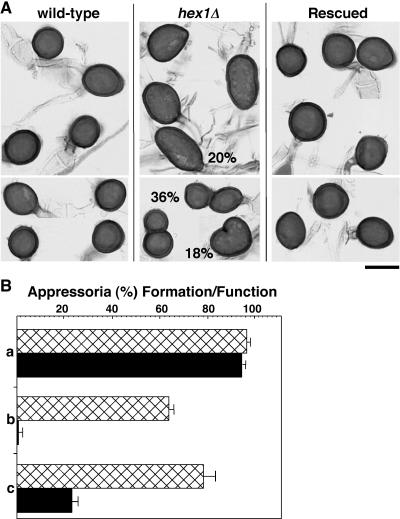Figure 3.
Appressorium Formation and Host Penetration Defects in hex1Δ Strain.
(A) Morphological defects in appressoria of the hex1Δ mutant. Conidia from the wild type, hex1Δ mutant, and a hex1Δ strain complemented with a full-length HEX1 (rescued) were allowed to germinate on onion epidermal strips and resultant melanized appressoria stained with acid fuchsin and assessed for morphological aberrations. Overall occurrence of a particular defect is indicated as a percentage value for the mutant appressoria. Bar = 10 μm.
(B) hex1Δ appressoria are reduced in host penetration. (a) Equal number of conidia were assessed for their appressorium formation capabilities in the wild type (hatched bar) or the hex1Δ mutant (closed bar). (b) Appressoria from the wild type (hatched) or hex1Δ strain (closed) were tested for their potential to penetrate the host cells and produce penetration hyphae 24 h postinoculation. (c) Penetration and infectivity assessed 48 h postinoculation in the wild type (hatched) or hex1Δ strain (closed). Mean values (± sd) presented as percentage points were calculated from three independent assessments.

